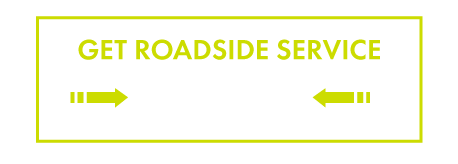Preparing for a Successful DOT Inspection: Tips for Commercial Vehicles
DOT inspections are a crucial aspect of ensuring road safety and compliance for commercial vehicles. They help identify and rectify issues that could compromise the safety of drivers and others on the road.
Preparing for a DOT inspection is not just about avoiding violations; it’s also about promoting safe driving practices and maintaining the integrity of your fleet. In this blog, we’ll explore the steps and best practices to prepare your commercial vehicle and drivers for a DOT inspection to ensure a smooth process and avoid violations.
Understanding the Purpose of DOT Inspections
Before delving into the preparations, it’s essential to understand why DOT inspections are conducted. These inspections serve several vital purposes:
Safety: The primary goal is to ensure the safety of commercial vehicles on the road. DOT inspectors check for equipment and driver-related issues that could lead to accidents.
Regulatory Compliance: DOT inspections ensure that commercial vehicles and drivers adhere to federal and state regulations, including hours-of-service (HOS) compliance and vehicle maintenance.
Environmental Impact: DOT inspections also check for emissions and environmental compliance to reduce the impact of commercial vehicles on the environment.
Types of DOT Inspections
DOT inspections come in various forms, with the most common being:
Level I Inspection: This is the most comprehensive inspection, covering both the vehicle and driver. It includes a thorough examination of the vehicle, as well as a review of driver credentials, hours-of-service compliance, and more.
Level II Inspection: This inspection is similar to a level I inspection but excludes the vehicle’s undercarriage and brake-related components.
Level III Inspection: Focused on the driver, this inspection examines their driver’s license, medical examiner’s certificate, hours-of-service documentation, and more.
Pre-Inspection Preparation for Vehicles
Properly preparing your commercial vehicle for a DOT inspection is essential. Here’s how to ensure your vehicle is inspection-ready:
1. Vehicle Documentation
Before the inspection, gather and organize all necessary documentation, including:
Driver’s license: Ensure the driver’s license is valid, and the driver’s medical certificate is up-to-date.
Vehicle registration: Confirm that the vehicle’s registration is current and valid.
Insurance documents: Provide proof of insurance coverage as required.
Maintenance records: Maintain detailed records of vehicle maintenance and repairs.
HOS records: Keep accurate and up-to-date records of driver hours of service.
2. Visual Inspection
Conduct a thorough pre-trip inspection of the vehicle. Look for any visible defects or issues that could result in violations during the inspection. Pay special attention to:
Brakes: Check for brake fluid leaks, worn brake pads, and proper adjustment.
Lights: Ensure all lights are functioning correctly, including headlights, taillights, and turn signals.
Tires: Inspect tire tread depth and look for signs of wear or damage.
Exhaust system: Check for leaks or damage.
Fluid levels: Ensure that all vehicle fluids, such as oil and coolant, are at appropriate levels.
3. Address Any Visible Defects
If you identify any defects during the visual inspection, address them promptly. Fixing minor issues before the inspection can prevent violations and ensure a smoother process.
Preparing Drivers for DOT Inspections
In addition to preparing your vehicles, it’s equally important to prepare your drivers for DOT inspections. Here’s how to ensure they’re inspection-ready:
1. Documentation
Ensure that your drivers have all the required documentation, including:
Driver’s license: Verify that each driver’s license is valid and up-to-date.
Medical examiner’s certificate: Ensure that drivers have a current medical certificate if required.
HOS records: Train drivers to maintain accurate and up-to-date records of their hours of service.
2. Knowledge
Train your drivers on what to expect during a DOT inspection. Make sure they understand the various types of inspections and the procedures involved.
Emphasize the importance of remaining calm and cooperative during the inspection.
3. Communication
Encourage clear communication between drivers and inspectors. Instruct drivers to answer questions truthfully and provide requested documents promptly. Effective communication can help the inspection process proceed smoothly.
Pre-Inspection Checklist
To simplify the preparation process, create a comprehensive pre-inspection checklist that covers both vehicle and driver requirements. This checklist should include all necessary documents, items to inspect on the vehicle, and reminders for drivers.
Here’s a sample pre-inspection checklist:
Vehicle Checklist:
- Driver’s license and medical certificate
- Vehicle registration and insurance documents
- Maintenance records
- HOS records
- Brakes and brake fluid
- Lights (headlights, taillights, turn signals)
- Tire tread depth and condition
- Exhaust system
- Fluid levels (oil, coolant, etc.)
Driver Checklist:
- Valid driver’s license
- Current medical examiner’s certificate (if required)
- Accurate and up-to-date HOS records
- Knowledge of inspection procedures
- Effective communication skills
What to Expect During a DOT Inspection
Knowing what to expect during a DOT inspection can help both drivers and fleet managers remain prepared and calm during the process. During a typical inspection, you can expect:
Vehicle examination: Inspectors will check various aspects of the vehicle, including brakes, tires, lights, and more.
Driver credentials: Inspectors will review driver documentation, including driver’s licenses, medical certificates, and hours-of-service records.
Cargo inspection: If applicable, inspectors may inspect the cargo to ensure it’s properly secured and labeled.
Interviews: Inspectors may conduct interviews with drivers to assess their knowledge of safety regulations.
Common Violations to Avoid
To ensure a successful DOT inspection, it’s essential to avoid common violations. Some of the most frequent violations include:
Hours-of-service violations: Ensure your drivers are compliant with HOS regulations to prevent violations related to driving hours and rest periods.
Brake violations: Regularly maintain and inspect your vehicle’s braking system to avoid brake-related violations.
Equipment violations: Address and repair any equipment defects before inspections to prevent violations related to lights, tires, and other components.
Cargo violations: Properly secure and label cargo to avoid violations related to cargo integrity and safety.
Responding to Inspection Outcomes
In some cases, DOT inspections may result in violations or issues that need to be addressed. It’s crucial to have a plan in place for responding to inspection outcomes. If violations are found, take the following steps:
Address violations promptly: Correct any violations as soon as possible, ensuring that all necessary repairs or adjustments are made.
Document corrective actions: Keep records of the steps taken to address violations.
Maintain open communication: If necessary, communicate with DOT authorities to resolve any outstanding issues or disputes.
Preparing for a DOT inspection is a vital part of ensuring the safety and compliance of your commercial vehicles. By following the steps and best practices outlined in this guide, you can increase your chances of a successful inspection while also promoting a culture of safety within your fleet.
Remember that preparation is key. Regularly review and update your pre-inspection checklists, provide ongoing training to your drivers, and stay informed about the latest DOT regulations.
By doing so, you’ll be well-prepared for DOT inspections and better equipped to maintain the safety and integrity of your fleet.
For more information on DOT inspections or to inquire about our maintenance and repair services, contact Fast Fleet today.
Our team of experts is dedicated to helping you navigate the complexities of DOT compliance and vehicle maintenance.
















